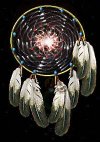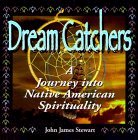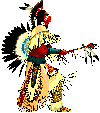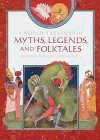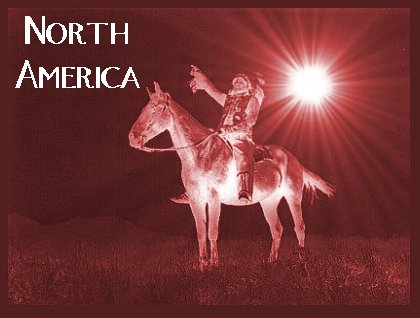 | HUH WUHLI NICH Ha- nam-a yo- o ya hai huh-wurt . . . far on the dessert redges stands the cactus Ka- na - hu- va muh- muhk lo the blossoms swaying Ka- cho-wuch-chi ka-no- ya ki-moi to and fro the blossoms swaying, swaying |
The British, and especially the Irish, were among the first to leave. Between 1800 and 1850 the population of the British Isles doubled and that of Ireland reached a record level in absolute terms (8 million around 1845). The Irish had begun to emigrate in large numbers: half a million crossed the Atlantic from 1820 to 1844 and nearly one and a third million in the decade that followed, at which point they represented half the influx to the USA. As for the English and Scots, 13 million of them emigrated between 1815 and 1914 in four successive waves (around 1850, 1870, 1885 and 1910). 65% settled in the USA, 15% in Canada. About 6 million Germans emigrated, mostly to the USA, with three peaks (around 1850, 1870 and 1885). Two million Scandinavians left, crossing the Atlantic either with the last wave of Germans or with the fourth wave of British. Italy expatriated 16 million citizens: 4 million to the US. At the same time there was an exodus from Central and Eastern Europe: 4 milion Austro-Hungarians, 2.5 million Russians and the same number of Poles. Over 15 years about 6 million people emigrated to the USA. The population of the USA in 1790 was 3.9 million; in 1930, 122.8m. footnote: In France the early adoption of birth control practicesmeant that the population was only just reporducing at replacement level; but for an increase in average lifespan it would not have grown, as it did, from 29 million to 40 million. consequently France contributed little to the great movement of Eurpean emigration. (yet another reason to be grateful for birth control, eh USA people?!? :)) |
Of all the peoples of the world, I reckon the North American Indians had the dreamiest life. They were generally peacable people, except for a few skirmishes with rival tribes (but, look at the Picts and Scots; Vikings and Saxons; Americans and erm, Americans). They were deeply spiritual - lived simply but civilised and well. They had horses; nice tents . . . then the Europeans came along . . . I love their legends.
Legend of the Dream Catcher
Long ago when the world was young,
an old Lakota spiritual leader was on a high mountain and had a vision.
In his vision, Iktomi, the great trickster and teacher of wisdom,
appeared in the form of a spider.
Iktomi spoke to him in a sacred language that only
the spiritual leaders of the Lakota could understand.
As he spoke, Iktomi, the spider, took the elder's willow hoop
which had feathers, horse hair, beads and offerings on it and
began to spin a web.
He spoke to the elder about the cycles of life and how we begin our lives
as infants and we move on to childhood, and then to adulthood.
Finally, we go to old age, where we must be taken care of as infants,
completing the cycle.
"But," Iktomi said as he continued to spin his web,
"in each time of life there are many forces,
some good and some bad. If you listen to the good forces,
they will steer you in the right direction.
But if you listen to the bad forces,
they will hurt you and steer you in the wrong direction."
He continued, "There are many forces and different directions that can help
or interfere with the harmony of nature,
and also with the Great Spirit and all of his wonderful teachings."
All the while the spider spoke, he continued to weave his web starting
from the outside and working towards the center.
When Iktomi finished speaking, he gave the Lakota elder the web and said,
"See, the web is a perfect circle but there is a hole in the center of the circle."
He said, "Use the web to help yourself and your people to reach your goals
and make good use of your people's ideas, dreams and visions.
"If you believe in the Great Spirit, the web will catch your good ideas
and the bad ones will go through the hole."
The Lakota elder passed on his vision to his people
and now the Sioux Indians use the dream catcher as the web of their life.
It is hung above their beds or in their home to sift their dreams and visions.
The good in their dreams are captured in the web of life and carried with them,
but the evil in their dreams escapes through the hole in the center of the web
and are no longer a part of them.
They believe that the dream catcher holds the destiny of their future.
or
The Legend of the Dream Catcher - 2
Legend has it that grandmother Spider sang the universe into existence, but was saddened by the bad dreams of her human children. She went to the Willow Tree and asked him for some of his branches. She then went to the Eagle and asked him for his powerful feathers. She then bent the branches into a circle to connect all points and people of the world. Then she spun her web of wisdom around the branches to catch her children's bad dreams. Grandfather Sun's morning rays burned away the bad dreams that were tangled in the web. Any that were left turned into dew and trickled down the eagle feather and were given back to Mother Earth.
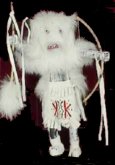
Traditionally, kachina dolls were hand carved from the root of the cottonwood tree, and they represent spirits of various things encountered in the daily lives of the Indians.
More to follow. I will also copy out a couple of tales from the "Dream Catchers: A Journey Into Native American Spirituality" Book I should like to dedicate this page to the lady who gave me permission to put this picture, "Piskowin" on my website. It is a painting she did of a person very close to her. She (the painter) has very recently been busy fighting lung cancer - and, I am so happy to say, has now been declared "cured". She is what you call a "fighter" and living proof that anything can be overcome if you have love, belief and the support and love of those around you. Good on ya, Zinny! You're an inspiration!
 This picture itself, was dedicated to the memory of Anna Mae Aquash. Please read her story.
| North American Lore Index Page American Indian Culture Research Center New Orleans Voodoo Dolls (eeek, not for me - they give me the creeps!) Virtual Voodoo Doll
I'd just like you to meet Ivy, my Brass Button "20th Century" 60's Bear, as she sits on the bed in "my room". She comes from Pickford Bears Limited, Minneapolis, but I'm afraid I don't know where on the www these bears may be purchased (yet!). Anyway, the bears have an interesting "legend" behind them. "On a sunny winter's day in 1900 June Goodridge, a seamstress from upstate Maine, opened the door to find a baby on her porch. He was wrapped in a simple blanket. She cared for the baby and the bond became so strong that she adopted the child and named him Joshua. When Joshua was eight, he made a teddy bear on his mother's sewing machine. He dressed it in the clothes of the day and fastened a brass button to it. The bear became his friend, and every ten years Joshua made another special bear. He went on to become successful in business and in life, with a happy marriage and ten children whom he loved dearly. In the year 2000, Joshua Goodridge will celebrate his 100th birthday. To this day, he tells his children and grandchildren the story of how the bears bring luck and prosperity to his life." Hmm! THANKS HEATHER!!!! :)
|

